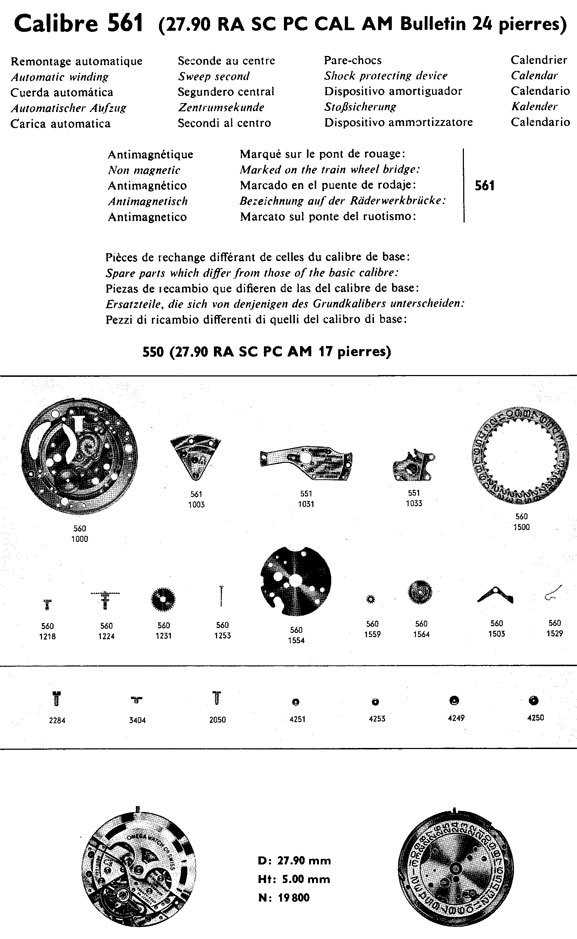Last weekend I had a chance to peruse another collector’s copy of “Omega: A Journey Through Time” by Marco Richon, the official factory historical reference for Omega’s vintage watches published in 2007. Somehow I just have yet to bite the bullet and get a copy for myself. After all, the price is not inconsiderable for a book, and it seems like each time I have some money in the watch fund it seems to wind up (hah!) going toward watch acquisitions or service/repairs instead of books. I was still enormously impressed with the reference and resolved that I have to get myself a copy some day. It’s a great reference with lots of photos and detail; if it has one major shortcoming might be the lack of an index to help find information in a reference material.
But in perusing through the book I came across one especially interesting item: a depiction of the letter from the Bureau de Marche (the chronometer certifying bureau that would later become the Contrôle Officiel suisse des Chronomètres or COSC) certifying the legendary series of 100,000 consecutive serial number movements that passed chronometer certification with especially good results. This would be quite an accomplishment even today, but it was an absolutely astounding feat for its era.
After all, these were sophisticated mechanical watch movements that had been assembled without the benefit of modern precision manufacturing techniques or computer and laser-assisted tools, and then subjected to rigorous performance testing that saw many movements fail. It’s hard to understate what a tremendous accomplishment this was. Think of it this way: even with the benefit of modern manufacturing methods, Six Sigma quality control techniques and such, if you went and purchased 100,000 of something as simple as light bulbs do you think all 100,000 in a row would even work right out of the box? And what if we subjected them to more detailed performance testing in a variety of temperatures and conditions?
This feat is something of a legend among Omega collectors. The 55x/56x/75x family of Omega calibers are already renowned among collectors, considered by many vintage watch enthusiasts (myself included) to be perhaps the finest and most accomplished mass-production movements ever put into cases by any maker before or since. The Omega Constellations and Seamaster Chronometers that used these movements were among the finest watches available at the time at any price, and they remain the object of collector attentions in the modern era for this reason. But for all the talk about it among collectors and in previous books, I had never seen a definitive description or accounting of the 100,000. The lack of documentation seemed almost conspicuous and prompted some “show me” skeptics to speculate that it might perhaps just be something of an apocryphal collector myth.
“Omega: A Journey Through Time” contains a photo of the letter from the Bureau de Marche attesting to the accomplishment, but for reasons that perplex me it was reduced to a simple 2″ image so difficult to read that I had to use a magnifying glass. Why they relegated this enormous accomplishment so little space in the book is completely beyond me.
But for curious minds, here’s an excerpt detailing the specifics:
- Cal 27,90RA [561]
- 24,410,000 – 24,509,999
- Résultants Particulièrement Bons (“Especially Good Results”)
- from 5 Oct 1964 – 10 Feb 1966
So if you’ve got a Omega Constellation with a caliber 561 movement within that serial range, you’ve got an especially remarkable watch even among especially remarkable watches. Congratulations!



Neat write-up, Ryan. Thanks!
Wow, impressive!
Thanks for the great info Ryan. I’ve discovered my cal 561Connie falls within the 100000 serial number range. It sits in my watch box next to the Geneve Dynamic I got from you last year.
Gary – I’m so very glad to hear it’s found a good home. I still miss that one occasionally when I’m looking for a good “going out” watch, and the Dynamic seems unsurpassed in that role so far. And of course it had that underrated high-grade movement driving it to boot. ;)
And congrats on owning such a distinctive Constellation too! You’re a fortunate collector indeed!